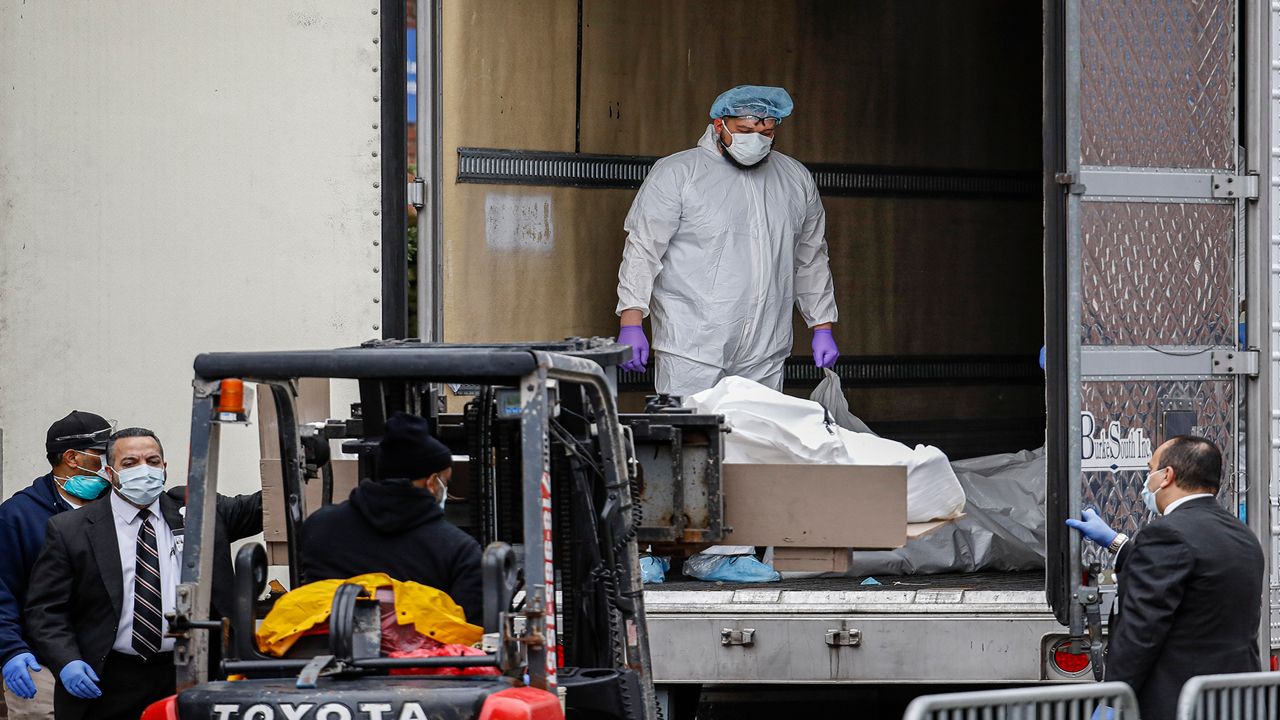CLEVELAND — The Cuyahoga County Medical Examiner has requested refrigerated trucks to assist with the expected fallout from Thanksgiving gatherings, which officials say fueled the spread of COVID-19.
The trucks are expected to arrive from the state this week to provide additional morgue space, said Cuyahoga County Medical Examiner Dr. Thomas Gilson during a Friday press conference.
As part of its Emergency Management Agency disaster plan, additional morgue space can be requested when the county sustains 30 or more deaths a day, which Cuyahoga County achieved last week, Gilson said.
Funeral homes say they are busy but not yet overwhelmed, he said, but area hospitals are also planning for the need for additional storage for corpses.
As of Sunday, Cuyahoga County reported 13,308 confirmed cases of COVID-19, with 403 new cases reported on Sunday, and 345 new cases reported Saturday.
The Ohio Department of Health reported 9,273 new cases statewide in the past 24 hours, with 7,022 total deaths from COVID-19. However, the state notes that the data is incomplete because of “unprecedented volume.”
During the press conferences, Cuyahoga County officials implored people to “do the right thing” and stay home as much as possible, saying the worst is yet to come.
Cuyahoga County is now on the watch list for Level 4, or purple, which is the highest level in the Ohio Health Department’s Public Health Advisory System. Counties are placed on the watch list if they meet six of the system‘s seven indicators for a full week.
Public Health Advisory System indicators include:
1. New cases per capita
2. Sustained increase in new cases
3. Proportion of cases not in a congregate setting
4. Sustained increase in emergency department visits for COVID-19-like illness
5. Sustained increase in outpatient visits for COVID-like illness
6. Sustained increase in new COVID-19 hospital admissions
7. Intensive care unit percentage of occupied beds
The situation is dire across Northeast Ohio, said Health Commissioner Terry Alan.
With 18 counties reporting high incidences of COVID-19 patients as of Monday, Lake, Lorain, Medina, Summit, Portage, Stark, Richland and Montgomery counties had all hit purple.
The rise is “no surprise,” said Allan. “The writing has been on the wall for some time.”
It can take an average of five days to two weeks to test positive for COVID-19 after exposure, he said, and in the meantime, those who are asymptomatic are infecting others.
“Remember that for each case, there's two to three contacts for each one of those cases, so these are very big numbers,” said Allan. “We’re going in the wrong direction.”
Allan recounted a warning from Dr. Amy Acton, Ohio’s former Health Department Director, who said back in March that Ohio could see 10,000 new COVID-19 cases per day. Ohio’s 21-day average of new cases now stands at 8,521.
“We are headed in that direction and it's very concerning,” Allan said. “Please understand that we are nearing or reaching capacity everywhere — at the state and local health departments, hospitals, urgent care centers and testing sites. This is very serious business.”
Cuyahoga County Board of Health Deputy Director of Prevention and Wellness Romona Brazile broke into tears while delivering her report on the rising numbers of patients.
Two weeks ago, cases began climbing from 200 to 400, and eventually to 1,100 cases a day, she said.
And as a medical professional, she knew what that meant for her community.
“We're trying to reach everyone we can, and I knew when I saw those cases that we would have to start to triage,” she said. “And for me personally, as a nurse, it's horrifying, but it's been necessary in the current situation that we're in.”
With the backlash from coronavirus spread at holiday gatherings still ahead, the situation is “dangerous,” Cuyahoga County Executive Armond Budish.
“Americans are individuals; we really don't like being told what to do,” he said. “But to be blunt about it, doing what we want isn't necessarily doing what's right. We have to look beyond ourselves. And remember, we're all neighbors. We are all members of one family — the human family.”



